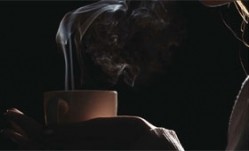How to maximise your drinks sales: hot beverages

For every pub that closes this year a café or restaurant will open, signalling a consumer trend towards a more European lifestyle, one that involves a trip to the high street for a mid-afternoon coffee or tea.
Pubs in particular should take note then to improve their hot beverage offering, as not only will they, along with restaurants and hotels, drive more customers through, they will develop a reputation for serving great tea and coffee in general.
“Tea is a huge growth market at the moment and businesses that are trading up and doing good tea are very busy during normally quiet times,” says tea expert and founder of Jing tea Edward Eisler.
“I know from my customers that tea is a very profitable and busy part of their offering and they’ve invested a lot there for those reasons.”
Show off
The secret to serving great tea, Eisler says, is quality, taste and ‘showing off’. To this end he suggests using only whole leaf loose tea, which has only a slightly higher price point than bagged tea. Serving this in glass teaware he claims will create a ‘I want what he’s having’ reaction, and entitles operators to charge a higher price point for what is clearly an experience.
“Serving tea in this way will end the meal on a good note and make people remember good things about their whole experience, which means they’ll come back again. If they’ve had a great meal and end it with a crap tea or coffee, it puts a downer on the whole experience and generates less repeat business and therefore less profit.”
Eisler suggests that hotels in particular create a special ‘tea menu’ that features around 20 teas (for London hotels) or 10-12 (for smaller hotels) to help market and create an occasion around their offering.
Restaurants and pubs, he says, should stick to just six to eight varieties.
Menus should feature a variety of green, black, herbal and fruit teas from different regions, with a brief description on each type. Using whole leaf loose tea will not only make a better impression floating in glass teaware, but will create a better flavour as well.
Poor quality
The same quality and service argument applies when serving coffee too. As Lavazza sales and marketing director Barry Kither says: “Ninety per cent of coffee served in restaurants isn’t as good as it should be.”
“Making a coffee is much easier than making a meal, but this leads to bad practices. In the kitchen everything on the pass is checked before it goes out to the customer, but behind the bar a cup of coffee goes out regardless.
“When Gordon Ramsay was running Aubergine he was a Lavazza customer and checked every cup of coffee that went out. But when a company grows, this attention to detail falls off the end of the list of priorities. I had the best meal in Maze recently, but the coffee was not so good.”
Once again a bad cup of coffee can ruin a dining experience in one fall swoop, so how can operators ensure their coffee hits the spot time and time again?
Speed, care and attention
While a general lack of care and attention in restaurants is the main reason why a cup of coffee falls below acceptable standards, timing is also a crucial aspect that many FOH staff fail to recognise, says Kither, who believes the food equivalent of a freshly made espresso is a soufflé.
“If you serve an espresso you have to get it out to the customer quickly. You can’t afford to let it hang around. It has to be with the customer within a minute of being poured.”
Taking the most rudimentary of approaches, restaurants should teach staff to know what to look for in a good cup of coffee, just as they do with food. “Staff know what a typical restaurant dish should look like, so just do the same for an espresso. Teach staff that if it doesn’t look right, don’t serve it. There is enough margin in coffee to tip it away and start again.”
If consistency is your main problem, or if you get through less than a kilo of beans a day, Kither suggests using a pod machine, which will not only provide a fresh shot of coffee every time, but reduce wastage too. Trained baristas may regard this as a cop-out, but for busy restaurants, particularly those with a small kitchen or FOH space, they can prove invaluable.
And if you still struggle? “If you can’t do espresso properly, do fresh filter coffee instead.”
Read more articles in this series here.




















